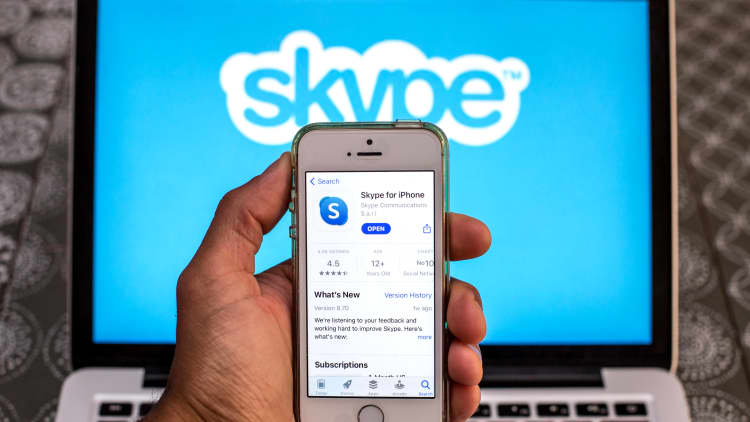The rise and fall of Skype
[ad_1]

Skype is not what it was. You may or may not have noticed.
The voice, video and messaging app became a hit in the 2000s by letting people talk with friends and family members without paying long-distance fees. In 2005 eBay bought it. That deal didn’t work out as planned, and an investor group led by Silver Lake purchased a majority stake. Microsoft then stepped in, shelling out $8.5 billion for the company in 2011.
Even backed by the world’s largest software company, Skype is falling by the wayside. During the pandemic, consumers and business workers turned to tools like Zoom and Meta’s WhatsApp, and now there are any number of options to quickly connect with groups of friends and colleagues over smartphones.
“Skype is still seen primarily as one-to-one,” Jim Gaynor, a research vice president at advisory firm Directions on Microsoft, said in a CNBC interview.
Microsoft has promoted Skype in Outlook and Windows and even enriched the app with its Bing generative artificial intelligence chatbot. But the numbers still don’t look great.
In March 2020, Microsoft said Skype had 40 million daily active users, a number that’s since slipped to 36 million, according to a spokesperson. Microsoft’s newer Teams communication app, by contrast, is growing in popularity, rising from nearly 250 million monthly users in July 2021 to a record of over 300 million in the first quarter.
Jaan Tallinn, one of Skype’s founding engineers, said that although it’s been more than a decade since he left Skype, it’s still his default choice for calls.
“If people want to use some other channel, then I’m happy to comply,” he said.
It’s not clear how much longer Skype will exist, but it’s not going anywhere just yet.
“Skype will remain a great option for people who love it and want to connect via messaging, audio and video calling, and Bing Chat,” a Microsoft spokesperson wrote in an email.
Watch CNBC’s digital video above to learn more about the growth and struggles of 20-year-old Skype.
[ad_2]
Source link

